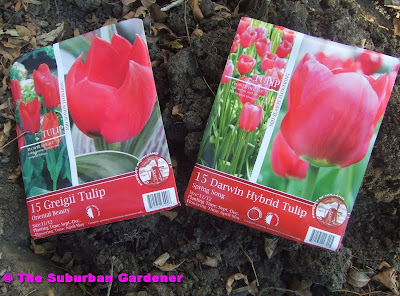
It is amaryllis season and Dancing Queen is my first bloomer. It did not bloom when I first planted it last spring.

I was so excited when I saw it sending up a scape in the basement a few days ago. However, the state of the scape is not healthy with its stunted growth that it barely grew out of the bulb.
Tarsonemid mites came to my mind remembering discussions on a forum. I peeled the dried layers of the bulb and sure enough there were tiny crawling insects barely visible to my eyes and there were red blotches on the bulb, a tell-tale sign of the infestation. I believe that
hot water treatment is used to treat this problem, where you soak the bulb in hot water in certain temperature and certain length of time.


Although my amaryllises were not fed on regular basis last summer, I am still lucky that DQ rewarded me with two beautiful flowers.

Here are a few of the plants growing in the basement. In this pot are Ammocharis coronica. These were grown from seeds and what you see are squirrel left overs.

This is
Lilium philippinense grown from seed. I've sown about 30 seeds and this is the lone survivor.

My amaryllis seedlings.

I put this lily bulb in the fridge on 09.05.10 right after it went to dormancy. A few days ago I found it growing so I potted it up yesterday. I got this lily from a trade and it is suppose to be a species lily from the south.
My thrift store find last week:
Born in the Spring and
Bulbs books.

I have gotten a lot of informations from this book.

And this book covers a lot of bulbs including lilies. It was published in 1976 and I am wondering if the following lilies still exist today.

Corsage
Update: 12.12.10
On the online Lily Register, Corsage was bred by Jan de Graaff in 1961. Parentage: Patterson's 'Lemon Queen' x 'Edith Cecelia'. There is one nursery in Minnesota that carry this lily. Corsage still exist.

Prosperity
Parentage: Amabile var luteum x 'Valencia', Jan de Graaff 1951. A photo of this lily can be found on Dave's Garden dated 2006. It still exist.

Connecticut Yankee
L. tigrinum flaviflorum x 'Gold Urn' David M. Stone 1959. Can't find a photo online.

Harlequin Hybrids
Jan de Graaff OBF, 1950, Salmon buff and other colors, spotted. No photos online.



















































